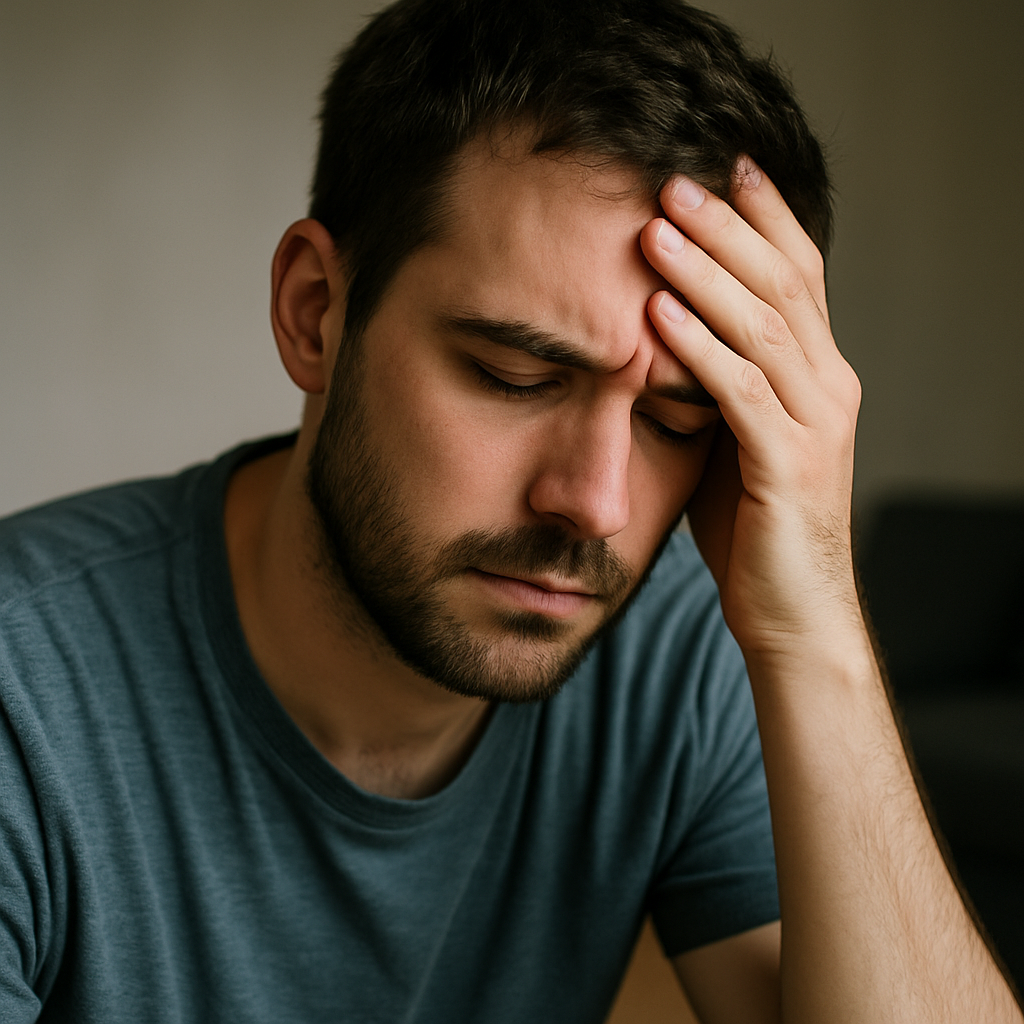🧪 Dopamine Exhaustion and Porn Addiction: A Chemical Trap


😶 In bedrooms around the world, couples silently struggle with a lack of sexual desire.
📉 For many, this isn’t a temporary lull but a persistent and distressing condition known as Hypoactive Sexual Desire Disorder (HSDD).
💔 HSDD doesn’t just affect sexual activity — it undermines self-worth, mental health, and emotional intimacy.
📊 Studies estimate that 1 in 10 women and 1 in 20 men suffer from clinically significant sexual apathy.
🌐 In the digital age, with hyperstimulation and stress, this problem is only intensifying.
📖 HSDD is defined as a persistent or recurrent deficiency or absence of sexual thoughts, fantasies, and desire for sexual activity.
🧠 It must cause marked distress or interpersonal difficulties to be clinically significant.
📆 The condition must persist for at least 6 months and not be better explained by:
– Another medical condition
– Medication side effects
– Relationship trauma
♀️ Women’s libido is deeply intertwined with emotional safety, stress levels, hormonal shifts, and self-image.
🧘♀️ Chronic stress, caregiving, and perfectionism often lead to “mental load burnout,” stifling desire.
🩸 Fluctuations in estrogen, progesterone, and testosterone (especially during postpartum, perimenopause, or after birth control) contribute significantly.
💬 Many women internalize the issue, feeling “broken” or ashamed, which creates a shame-desire suppression cycle.
📉 Others are misdiagnosed with depression when the root is sexual disconnection.
♂️ Male desire is not just hormonal — it’s deeply affected by stress, performance anxiety, emotional intimacy, and body image.
📉 Apathy in men often emerges as:
– Decreased morning erections
– Less interest in initiating sex
– Avoiding physical intimacy
💊 SSRI use, pornography desensitization, obesity, and low testosterone are frequent culprits.
⚠️ Unlike erectile dysfunction, sexual apathy often goes unrecognized — or misattributed to relationship boredom.
🧬 Sexual desire originates in the limbic system — particularly the hypothalamus and amygdala.
🧪 Neurotransmitters involved include:
– 🔥 Dopamine (desire and anticipation)
– 💆 Serotonin (mood regulation)
– 🤗 Oxytocin (bonding and trust)
– 💣 Prolactin (inhibits desire post-orgasm)
📉 Imbalances in these chemicals due to chronic stress, trauma, medication, or sleep loss can suppress libido even if physical health is intact.
🖥️ Screens are replacing sensuality — constant digital input rewires the brain for fast dopamine hits.
📉 Social media, work emails, video games, and porn all hijack attention and deplete the energy needed for slow, present, embodied desire.
🧠 Over time, this leads to dopamine burnout and a disconnect between the mind and body.
🧱 Childhood trauma, religious sexual shame, or past toxic relationships can cause deep subconscious resistance to desire.
💬 Internal thoughts like “I don’t deserve pleasure” or “Sex is unsafe” create emotional blocks.
📉 Depression, PTSD, and anxiety commonly suppress sexual initiative.
🧘 Cognitive distortions, like catastrophizing or perfectionism, create fear of failure or inadequacy during intimacy.
🧍♂️ Apathy is often a symptom of relationship disconnection, not just an individual dysfunction.
💔 Partners may stop initiating after repeated rejections, leading to sexual silence.
🎭 Emotional avoidance, resentment, or unspoken anger become barriers to erotic energy.
🔄 This cycle creates a feedback loop of rejection and shame.
💊 Antidepressants (SSRIs, SNRIs)
🧬 Thyroid dysfunction (hypothyroidism)
🍬 Diabetes and insulin resistance
🧠 Neurological disorders (MS, Parkinson’s)
🦴 Pelvic floor dysfunction or chronic pain
💊 Hormonal contraception or menopause-related changes
⚠️ These often go untreated because sexual complaints are rarely volunteered or asked about.
📋 Doctors may use:
– The Sexual Desire Inventory (SDI)
– The Decreased Sexual Desire Screener (DSDS)
🧑⚕️ Hormonal blood tests: testosterone, estrogen, prolactin, thyroid
🧠 Psychological assessment for trauma, depression, or anxiety
💬 Relationship counseling for emotional avoidance or miscommunication
💊 Flibanserin (Addyi) or Bremelanotide (Vyleesi) for premenopausal women
🧪 Testosterone therapy (for clinically low levels)
🧠 CBT (Cognitive Behavioral Therapy) for intrusive thoughts and trauma
📚 Sensate focus exercises (non-sexual touch to rebuild body trust)
💞 Couples therapy for communication and emotional reconnection
🧘 Mindfulness, yoga, and stress reduction to reconnect with the body
🥦 Diet: Zinc, omega-3s, and magnesium enhance hormone production
🏃♂️ Movement: Exercise boosts testosterone and body confidence
🧘 Breathwork: Reduces cortisol and increases arousal sensitivity
🌿 Herbal adaptogens: Ashwagandha, maca, and ginseng show libido benefits
📆 Scheduled intimacy: Builds anticipation and emotional safety
🤐 Many believe “sex should come naturally” — when it doesn’t, they blame themselves.
💔 Cultural narratives shame women for desire and men for lacking it.
📉 This silence leads to misdiagnosis, frustration, and unnecessary relationship strain.
🧠 Open dialogue can radically transform shame into connection and healing.
💡 Sexual apathy is not failure, weakness, or selfishness — it’s a multi-layered medical and emotional condition.
🌿 The journey toward desire isn’t about performance — it’s about presence, healing, and intention.
🧠 With support, transparency, and science-based tools, even the dimmest flame can burn again.
Comments
Post a Comment